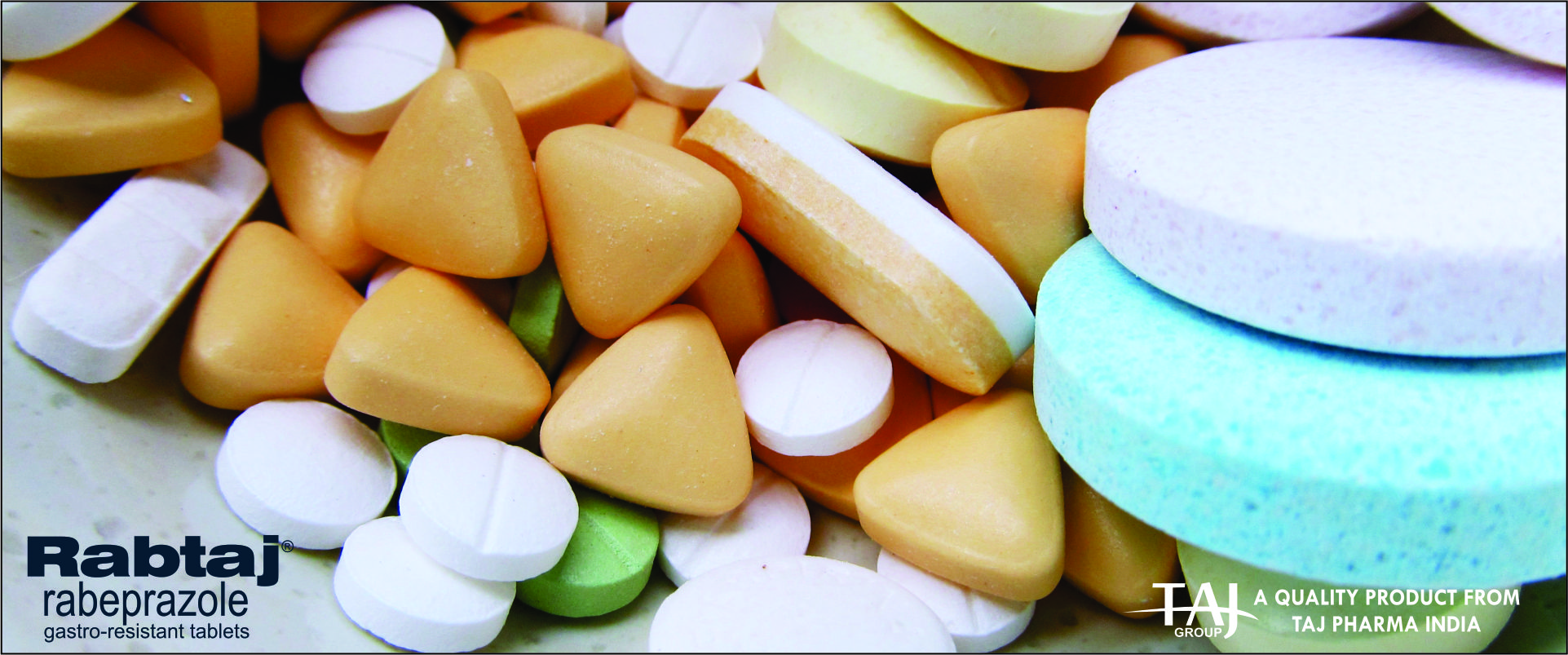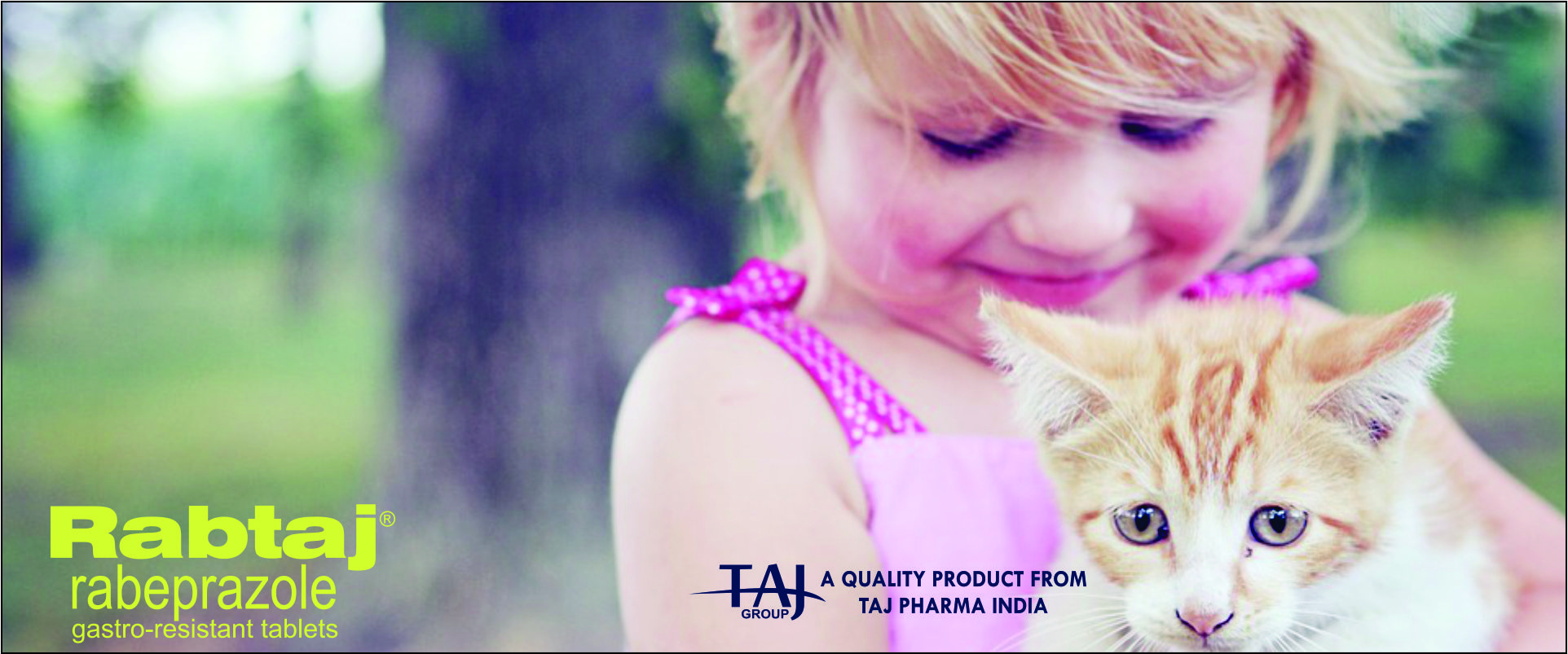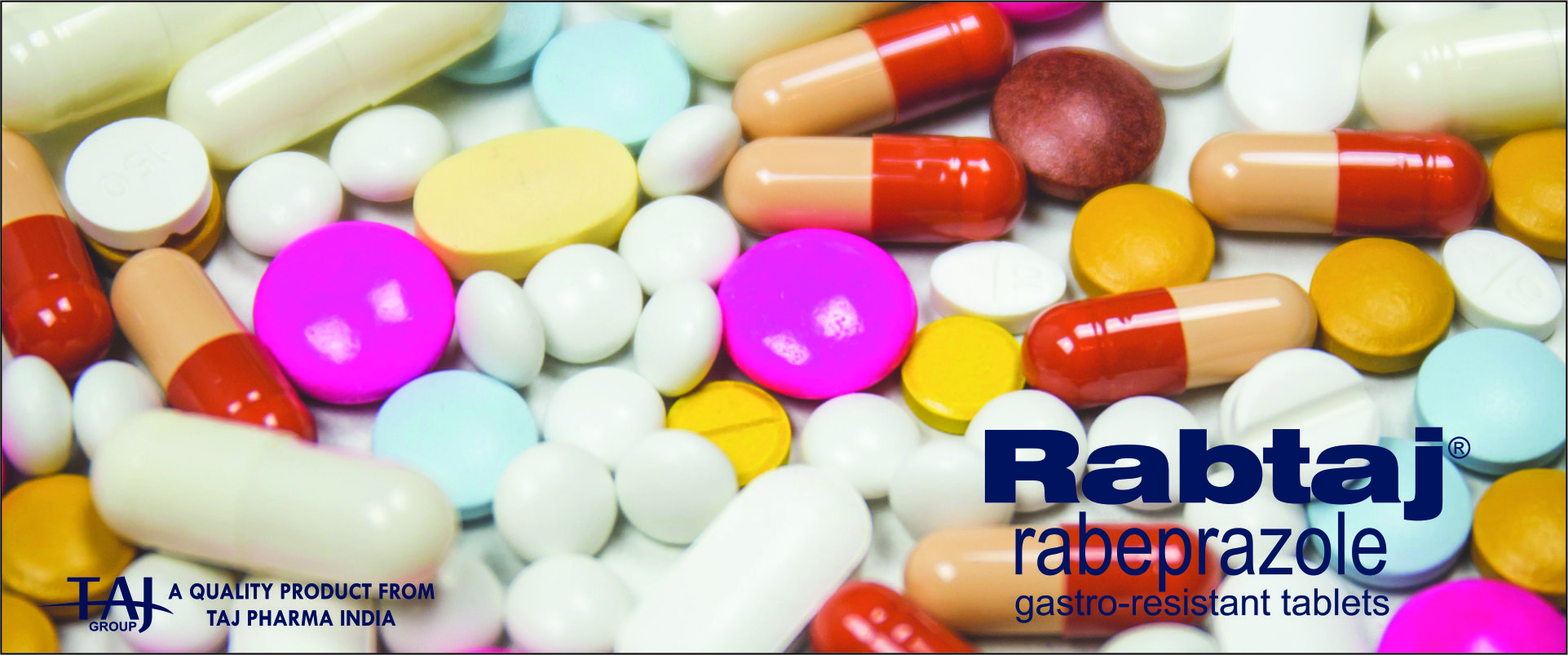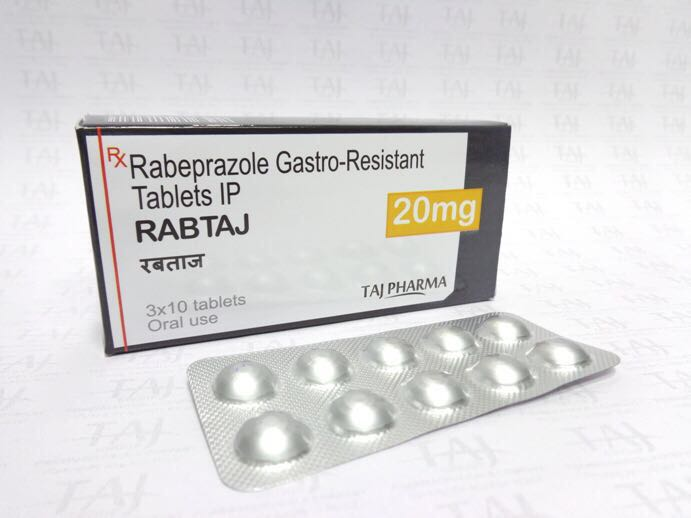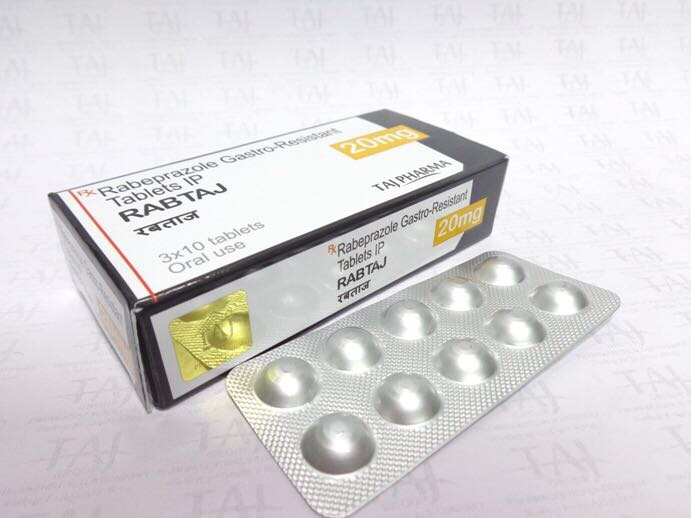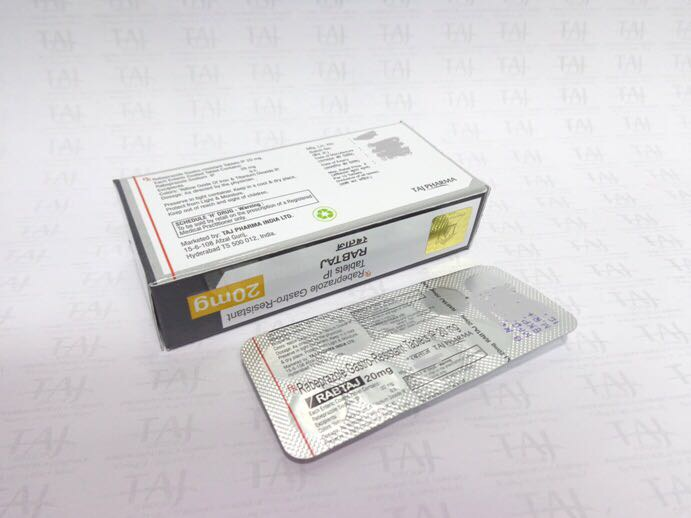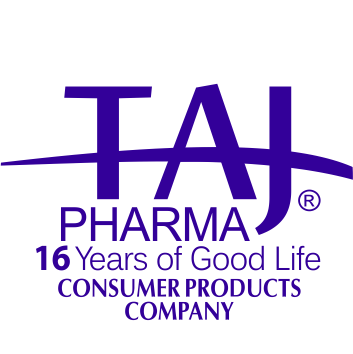1. WHAT RABTAJ IS AND WHAT IT IS USED FOR
Rabtaj contains the active ingredient rabeprazole sodium. It belongs to a group of drugs called proton pump inhibitors (PPIs), which work by reducing the production of acid in the stomach. This makes it possible for ulcers to heal, and thereby reduces pain.
Rabtaj are used: to treat active duodenal ulcers (ulcers in your intestine)
• to treat active benign gastric ulcers or peptic ulcers (ulcers in your stomach)
• to treat gastro-oesophageal reflux disease (GORD), commonly referred to as inflammation of the gullet (food pipe), associated with pain, discomfort and heart burn caused by reflux of stomach acid into the gullet, including moderate to very severe versions of the disease.
• for the long-term treatment of GORD, to prevent recurrence of the disease after the symptoms have disappeared (GORD maintenance)
• in patients whose stomachs may contain extremely high amounts of acid, a condition called Zollinger-Ellison Syndrome.
• in combination with appropriate antibacterial therapeutic regimens, to remove the bacterium Helicobacter pylori (H. pylori) in patients with peptic ulcer disease.
2. WHAT YOU NEED TO KNOW BEFORE YOU TAKE RABTAJ
Do not take Rabtaj
• if you are allergic to rabeprazole sodium, or any of the other ingredients of this medicine.
• if you are pregnant or think you may be pregnant or if you are breast-feeding (please see “Pregnancy, breast-feeding and fertility”).
Warnings and precautions
Talk to your doctor or pharmacist before taking Rabtaj
• if you are allergic to other proton pump inhibitor medicines or ‘substituted benzimidazoles’
• if Blood and liver problems have been seen in some patients but often get better when Rabeprazole sodium gastro-resistant Tablets are stopped if you have a stomach tumour
• if you have ever had liver problems
• if you are taking atazanavir-for HIV infection
• if you have reduced body stores or risk factors for reduced vitamin B12 and receive long term treatment with Rabeprazole sodium. As with all acid reducing agents, Rabeprazole sodium may lead to a reduced absorption of vitamin B12
• Taking a proton pump inhibitor like Rabtaj, especially over a period of more than one year, may slightly increase your risk of fracture in the hip, wrist or spine. Tell your doctor if you have osteoporosis or if you are taking corticosteroids (which can increase the risk of osteoporosis).
• if you have ever had a skin reaction after treatment with a medicine similar to Rabeprazole sodium gastro-resistant Tablets that reduces stomach acid.
• if you are due to have a specific blood test (Chromogranin A).
If you get a rash on your skin, especially in areas exposed to the sun tell your doctor as soon as you can, as you may need to stop your treatment with Rabtaj. Remember to also mention any other ill-effects like pain in your joints.
If you are not sure if any of the above applies to you, talk to your doctor or pharmacist before using Rabtaj.
If you experience severe (watery or bloody) diarrhoea with symptoms such as fever, abdominal pain or tenderness, stop taking Rabtaj and see a doctor straight away.
Other medicines and Rabtaj
Rabtaj can influence the effect of some other medicine e.g.:
• Atazanavir (used to treat HIV-infection): Rabtaj are not recommended at the same time as atazanavir as it could make atazanavir less effective.
• Ketoconazole or itraconazole (medicines used for treatment of fungal infections): your doctor may monitor you more closely and adjust the dose of ketoconazole or itraconazole if necessary.
• Methotrexate (a chemotherapy medicine used in high doses to treat cancer) – if you are taking a high dose of methotrexate, your doctor may temporarily stop your Rabeprazole sodium gastroresistant Tablets treatment.
Tell your doctor or pharmacist if you are taking, have recently taken or might take any other medicines.
Pregnancy, breast-feeding and fertility
If you are pregnant or breast-feeding, think you may be pregnant or are planning to have a baby, ask your doctor or pharmacist for advice before taking this medicine.
Driving and using machines
It is very unlikely that Rabtaj should impair the ability to drive or use machines. If you feel sleepy or drowsy you should avoid driving or using machines.
3. HOW TO TAKE RABTAJ
Always take this medicine exactly as your doctor or pharmacist has told you. Check with your doctor or pharmacist if you are not sure.
You should take Rabtaj once daily, preferably before breakfast.
• The recommended dose is one Rabtaj 20 mg or 10 mg daily.
• For duodenal ulcer and benign gastric ulcer, the recommended dose is one Rabeprazole sodium gastro-resistant tablet 20 mg daily.
• For gastro-oesophageal reflux disease (GORD), the recommended dose is one Rabeprazole sodium gastro-resistant tablet 20 mg daily.
• For GORD maintenance treatment, the recommended dose is one Rabeprazole sodium gastroresistant tablet daily 20 mg or 10 mg, depending on individual needs.
• For the symptomatic treatment of moderate to very serious GORD, the recommended dose is one Rabtaj 10 mg once daily.
• For the treatment of Zollinger-Ellison syndrome, the recommended dose is three Rabeprazole sodium gastro-resistant tablets 20 mg a day, in one dose. Depending on how you respond to this dose, the doctor may then increase it up to three Rabtaj 20 mg twice a day, if necessary.
• For the eradication of the Helicobacter pylori bacterium the following treatment is recommended for 7 days: one Rabtaj 20 mg twice daily in combination with antibiotics clarithromycin and amoxicillin’.
Not all recommended dosages are possible with this product; however, other products with a strength lower than 20 mg are also available.
Use in children:
• Rabtaj are not recommended for use in children.
Method of administration:
The gastro-resistant tablet should be swallowed whole with sufficient liquid, preferably before breakfast. The tablet should not be chewed or crushed.
Duration of treatment:
• If you have a duodenal ulcer: normally 4 weeks, but after this your doctor can decide to continue the treatment for 4 more weeks.
• If you have a stomach ulcer: normally 6 weeks, but after this your doctor can decide to continue the treatment for 6 more weeks.
• If you have pain or discomfort due to reflux of stomach acid into the gullet (GORD): 4-8 weeks
• For GORD maintenance treatment, the doctor will decide for how long the tablets should be taken.
• If you are given symptomatic treatment of moderate to very serious gastro-oesophageal reflux disease: normally 4 weeks.
If you take more Rabtaj than you should
Please contact your doctor or pharmacist immediately, if you have taken more Rabtaj than you should.
If you forget to take Rabtaj
If you have forgotten to take a dose, take it immediately when you remember and continue the treatment as usual. If it is almost time to take the next dose, you should not take the forgotten tablet. Do not take a double dose to make up for a forgotten dose.
If you stop taking Rabtaj
Do not stop taking Rabtaj just because you feel better. If you stop taking your tablets too soon, your symptoms may return.
If you have any further questions on the use of this medicine, ask your doctor or pharmacist.
4. POSSIBLE SIDE EFFECTS
Like all medicines, this medicine can cause side effects, although not everybody gets them.
If any of these symptoms appear, you should stop treatment with Rabeprazole sodium gastroresistant Tablets and contact your doctor:
Rare side effect (may affect up to 1 in 1,000 people).
• Allergic reactions – the signs may include: sudden swelling of your face, difficulty breathing or low blood pressure which may cause fainting or collapse.
• Frequent infections, such as a sore throat or high temperature (fever), or ulcers in your mouth or throat.
• Bruising or bleeding easily.
Very rare side effects (may affect up to 1 in 10,000 people).
• Severe skin blistering, or soreness or ulcers in your mouth and throat.
The following side effects also have been reported:
Common (may affect up to 1 in 10 people):
• Infections
• Difficulty sleeping (Insomnia), headache, dizziness
• Cough, runny nose (rhinitis) or sore throat (pharyngitis)
• Effects on your stomach or gut such as stomach pain, diarrhoea, wind (flatulence), feeling sick (nausea), being sick (vomiting) or constipation
• Pain without any known cause or back pain
• Weakness (asthenia) or flu-like symptoms.
Uncommon (may affect up to 1 in 100 people):
• Feeling nervous
• Sleepiness or drowsiness
• Chest infection (bronchitis)
• Painful and blocked sinuses (sinusitis)
• Dry mouth
• Indigestion or belching
• Skin rash or redness of the skin
• Muscle pain, leg cramps or joint pain
• Fracture of the hip, wrist or spine (see Warnings and precautions)
• Bladder infection (urinary tract infection)
• Chest pain
• Chills or fever
• Abnormal liver function test results
Rare (may affect up to 1 in 1,000 people):
• Changes in white blood cells (shown in blood tests) which may result in frequent infection.
• Reduction in blood platelets resulting in bleeding or bruising more easily than normal.
• Hypersensitivity (includes allergic reactions)
• Loss of appetite (Anorexia)
• Depression
• Visual disturbance
• Inflammation of the stomach or mouth
• Taste disturbance
• Liver problems such as inflammation of the liver (hepatitis), brain damage due to liver disease (hepatic encephalopathy) and including yellowing of your skin and whites of your eyes (jaundice)
• Itchy rash or blistering skin
• Sweating
• Kidney problems
• Weight gain
Very rare (may affect up to 1 in 10,000 people):
• Serious illness with blistering of the skin (toxic epidermal necrolysis)
• severe skin reactions, blistering of the skin, mouth, eyes and genitals (Steven-Johnson syndrome)
Not known (frequency cannot be estimated from the available data):
• Low blood levels of sodium which can cause tiredness and confusion, muscle twitching, fits and coma (Hyponatremia).
• Confusion
• Swelling in the limbs
• Breast swelling in men
• Rash, possibly with pain in the joints
• If you are on Rabtaj for more than three months it is possible that the levels of magnesium in your blood may fall. Low levels of magnesium can be seen as fatigue, involuntary muscle contractions, disorientation, convulsions, dizziness, increased heart rate. If you get any of these symptoms, please tell your doctor promptly. Low levels of magnesium can also lead to a reduction in potassium or calcium levels in the blood. Your doctor may decide to perform regular blood tests to monitor your levels of magnesium.
Reporting of side effects
If you get any side effects talk to your doctor or pharmacist. This includes any possible side effects not listed in this leaflet. By reporting side effects you can help provide more information on the safety of this medicine.
5. HOW TO STORE RABTAJ
Keep this medicine out of the sight and reach of children.
Store below 25° C.
Store in original package in order to protect from moisture.
Do not use any Rabeprazole sodium 20 mg gastro-resistant tablets pack that is damaged or shows signs of tampering.
Do not use this medicine after the expiry date which is stated on the carton or blister after “EXP”. The expiry date refers to the last day of that month.
Do not throw away any medicines via wastewater or household waste. Ask your pharmacist how to throw away medicines you no longer use. These measures will help protect the environment.
6. CONTENTS OF THE PACK AND FURTHER INFORMATION
What Rabtaj contain
The active substance is Rabeprazole sodium.
Each gastro-resistant tablet contains 20 mg of rabeprazole sodium equivalent to 18.85 mg of rabeprazole.
The other ingredients are:
Tablet core:
Magnesium Oxide, Light (E530) Mannitol (SD 200) (E421) Low-Substituted Hydroxypropyl Cellulose Hydroxypropylcellulose (E463) Magnesium stearate (E572)
Seal coating:
Hypromellose E5 (E464) Macrogol 400 (E1521) Talc (E553b)
Enteric coating:
Methacrylic acid-ethyl acrylate copolymer Dispersion 30 Percent Sodium laurilsulfate polysorbate 80 (E 433) Triethyl Citrate (E1505) Titanium Dioxide (E171) Iron oxide Yellow (E172) Talc (E553b)
Printing ink:
Shellac glaze (E904) Propylene glycol (E1520) Iron oxide black (E172) Ammonium hydroxide (E527)
What Rabtaj look like and contents of the pack
Rabeprazole sodium 20 mg gastro-resistant tablets are yellow coloured, round shape, biconvex, enteric coated tablets.
Pack sizes: 1, 5, 7, 14, 15, 25, 28, 30, 50, 56, 75, 98, 112 and 120 tablets in blister.
Not all pack sizes may be marketed.
Manufactured in India by:
TAJ PHARMACEUTICALS LTD.
Mumbai, India
at SURVEY NO. 188/1, 190/1TO 4, ATHIYAWAD ,
DABHEL, DAMAN- 396210 (INDIA)
Click here for Download pdf of patient informationClick here for Download pdf of prescribing information
